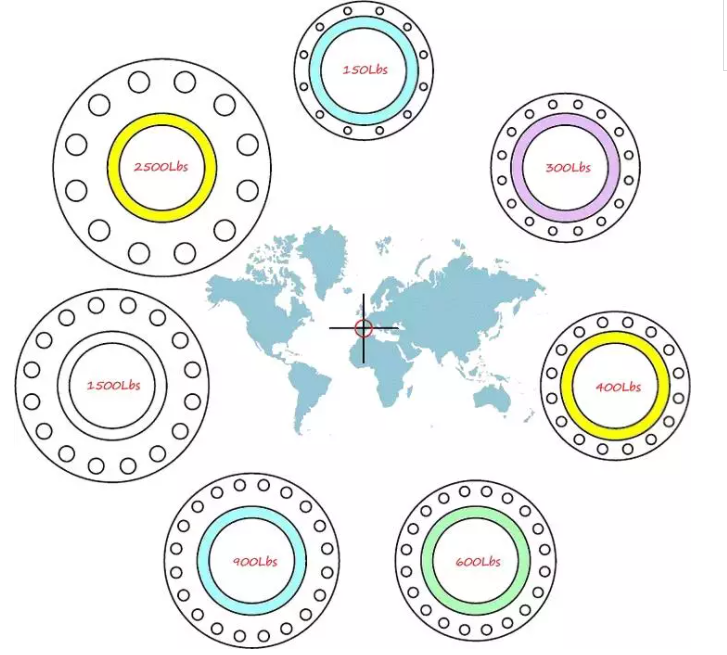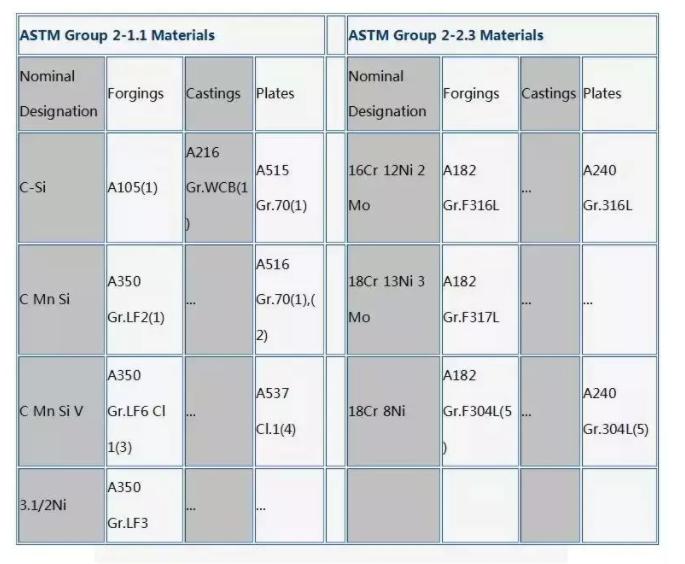According to ASME B16.5, steel flanges have 7 pressure levels: Class150-300-400-600-900-1500-2500
The pressure rating of the flange is very clear. The flange of Class300 can withstand greater pressure than that of Class150, because the flange of Class300 needs to be made of more materials to withstand greater pressure. However, the pressure capacity of the flange is affected by many factors. The pressure rating of the flange is expressed in pounds, and there are different ways to express a pressure rating. For example: flange 150lbs, 150# and Class150 have the same meaning.
The pressure-bearing capacity of the flange for sale is also different at different temperatures. As the temperature rises, the pressure-bearing capacity of the flange decreases. For example, the flange of Class150 has a pressure bearing capacity of 270 PSIG at room temperature, a pressure bearing capacity of 180 PSIG at 400°F, a pressure bearing capacity of 150 PSIG at 600°F, and a pressure bearing capacity of 75 PSIG at 800°F.
In other words, when the pressure drops, the temperature is allowed to rise, and vice versa. Since the flange can be made of different materials, such as stainless steel, cast iron, ductile iron, carbon steel, etc., each material has a different pressure rating. The pressure capacity of the flange 150lbs is different from other standards.
The following figure is an example of an NPS12 flange. As you can see, the diameter of the inner hole and the raised surface of the flange are the same. However, the outer diameter of the flange, the diameter of the bolt hole center circle, and the diameter of the bolt hole become larger as the pressure level increases.
The number and diameter of bolt holes are:
CL 150-12 x 25.4 CL 300-16 x 28.6 CL 400-16 x 34.9 CL 600-20 x 34.9 CL 900-20 x 38.1 CL 1500-16 x 54 CL 2500-12 x 73

The pressure-temperature rating refers to the maximum allowable working gauge pressure (pressure unit is Bar) of the material and grade at the rated temperature (degrees Celsius). For the intermediate temperature, the linear interpolation method is allowed to determine. However, it is not allowed to insert between flange levels.
If the bolts and gaskets of the flange joint meet the relevant restrictions, and the alignment and assembly of the flange joint conform to good regulations, then such a flange joint can be suitable for pressure-temperature ratings. If the latter is used for flange joints that do not meet these restrictions, the user is responsible.
The rated temperature corresponding to the rated pressure refers to the shell temperature of the pressure vessel of the flange and flange pipe fittings. In general, this temperature is the same as the temperature of the storage fluid. The user shall be responsible for selecting the pressure rating not based on the temperature of the stored fluid. When the temperature is below -29°C (-20°F), the rated value should not be greater than the rated value at -29°C (-20°F).

 Call us on:
Call us on:  Email Us:
Email Us:  No.68 Hezuo Road, Shijiazhuang City, Hebei Province, China
No.68 Hezuo Road, Shijiazhuang City, Hebei Province, China 